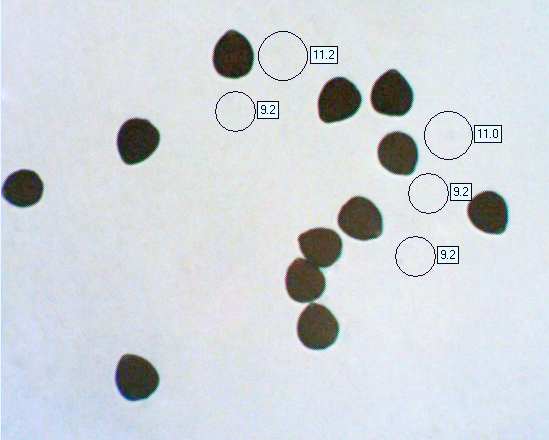Parasola leiocephala (P. D. Orton) Redhead, Vilgalys & Hopple - Bald Inkcap
Phylum: Basidiomycota - Class: Agaricomycetes - Order: Agaricales - Family: Psathyrellaceae
Distribution - Taxonomic History - Etymology - Identification - Culinary Notes - Reference Sources
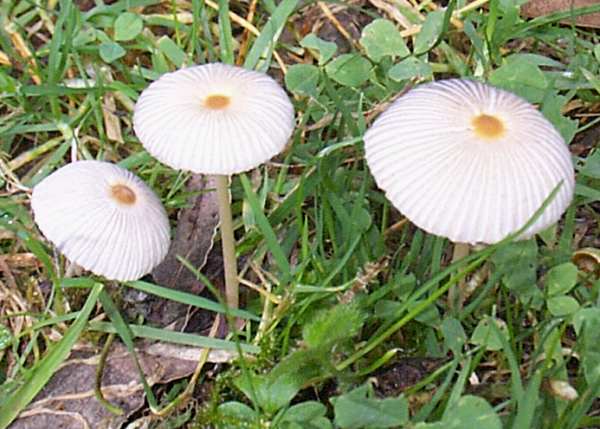
Recently given the common name Bald Inkcap, Parasola (formerly Coprinus) leiocephala is a very delicate member of the inkcap group of fungi. It occurs singly or in small groups in short grass and on woodland edges.
This is one of the many short-lived inkcap fungi that appear overnight following rain; the fruitbodies develop, expand, shed their spores and decay within 24 hours and by the next morning there is usually little or no evidence of them ever having been there.
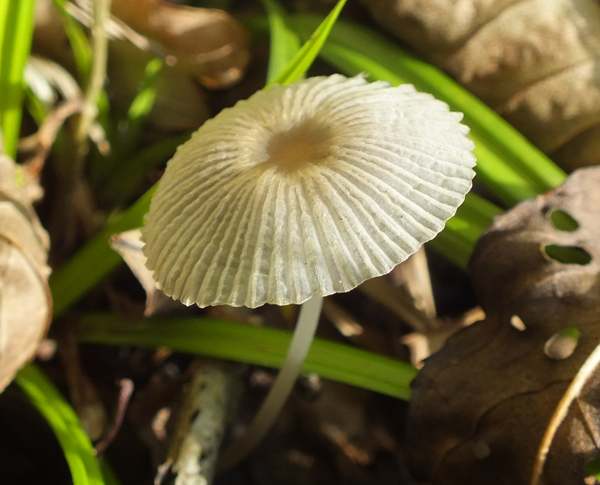
Distribution
Fairly common and widespread in Britain and Ireland, this little mushroom is found also throughout mainland Europe as well as in many other parts of the world including North America.
Taxonomic history
This little Inkcap was first described scientifically in 1969 by British mycologist Peter Darbishire Orton (1916 - 2005), who named it Coprinus leiocephala. In 2001, based on DNA sequencing, Redhead, Vilgalys & Hopple redistributed most of the species formerly collected in the Coprinus genus. This and several similar little inkcaps were moved to the genus Parasola along with a great many superficially similar little mushrooms, and so the scientific name of this species became Parasola leiocephala. (A microscope is essential to separate the various Parasola species with certainty, and even then it is no task for a beginner.)
Synonyms of Parasola leiocephala include Coprinus leiocephala (P. D. Orton).
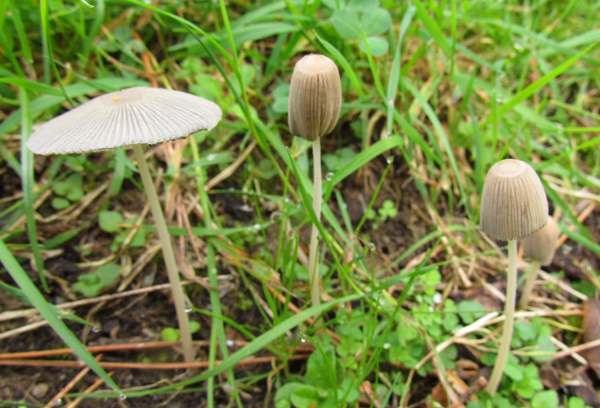
Etymology
The specific epithet leiocephala comes from leio- meaning smooth and cephalus, meaning head. Unlike Parasola auricoma, which has a minutely-hairy cap, the surface of the cap of Parasola leiocephala is smooth (but radially ribbed, of course!).
Identification guide
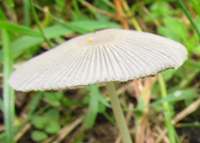 |
CapThe cap of Parasola leiocephala has a diameter of 1 to 2cm, is heavily ribbed, and initially egg-shaped, then convex and finally flat. A distinctive pale tawny central 'eye' contrasts with the rest of the pale grey cap. |
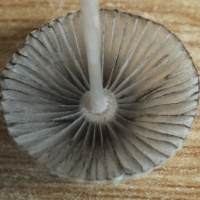 |
GillsThe white gills turn grey and then black; they are free of the stem (unlike those of Parasola auricoma, which are adnate or adnexed to the stem) and are thin and moderately spaced. Unlike many of the inkcaps, this delicate little fungus has a cap that flattens and then shrivels rather than its gills deliquescing (turning to a black inky liquid). StemUp to 6cm long, but only 4 or 5mm in diameter, with a slightly swollen (sub-bulbous) base, and very fragile, the stem of Parasola plicatilis is faintly fibrillose; its colour is white or dingy cream becoming slightly brownish at the base. |
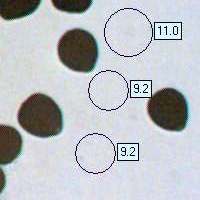 |
SporesIrregularly heart shaped with five rounded sides in face view and ellipsoidal in cross section, 9.5-12 x 7.0-10 x 8-10.5 x 5-7μm, with a small eccentric germ pore. Spore printBlack in mass. |
Odour/taste |
Not distinctive. |
Habitat & Ecological role |
Parasola leiocephala is a saprobic mushroom; it appears in short grass on woodland edges and under trees in parks, usually in small groups. |
Season |
May to November in Britain and Ireland. |
Similar species |
Parasola plicatilis has larger spores and its gills are attached to a collar around the top of the stem. Parasola auricoma is slightly larger and its young caps are a much darker orange-brown; it has minute hairs among its cap cells and grows in woodland habitats and on woodchip mulch. |
Culinary Notes
This Inkcap is generally regarded as inedible, and its small size and thin flesh mean that there is little temptation to try eating this insubstantial mushroom.
Reference Sources
Fascinated by Fungi, 2nd Edition, Pat O'Reilly 2016, reprinted by Coch-y-bonddu Books in 2022.
Orton, P. D. 1969. Notes on British agarics III. Notes Royal Botanic Garden, Edinburgh 29: 75-127.
Orton, P. D. & Watling, R. (1979). British Fungus Flora: Agarics and Boleti. Vol 2. Coprinaceae: Coprinus. Royal Botanic Garden: Edinburgh, Scotland.
Dictionary of the Fungi; Paul M. Kirk, Paul F. Cannon, David W. Minter and J. A. Stalpers; CABI, 2008
Taxonomic history and synonym information on these pages is drawn from many sources but in particular from the British Mycological Society's GB Checklist of Fungi.
Fascinated by Fungi. Back by popular demand, Pat O'Reilly's best-selling 450-page hardback book is available now. The latest second edition was republished with a sparkling new cover design in September 2022 by Coch-y-Bonddu Books. Full details and copies are available from the publisher's online bookshop...
